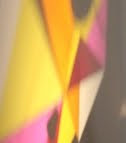when cicadas sound like ragas and ragas look like cicadas...

yesterday, a friend of mine sent me a link to a website related to the sound of some red wing grasshoppers we had encountered in marfa, in september. (they were some of the most beautiful insects i've ever seen). while the site had some incredible sounds, there was also an image of a spectrogram of a chorus of cicadas recorded in arizona.(this is the top image)
when i took a look at the spectrogram, it immediately reminded me of some of the later paintings of lee mullican, one of my favorite painters, who i've written about before. of course, the connection seemed a kind of visual coincidence until i discovered a painting of mullican's from 1962 called evening raga, in which mullican has pulled out all the stops in trying to represent the spectral qualities of indian music. certainly it is not much of a stretch to suggest that the sounds of crickets, grasshoppers, and/or cicadas are equivalent to an evening raga, perhaps not in strict musical terms, but certainly in terms of a listening experience.
the bottom image is another of mullican's paintings, this one called guardian of the modern, from 1979. mullican's work seemed to become more and more fragmented and hallucinatory in the mid-late 70's, and again the multiplicity of tiny parts spread out over a field seems almost a map-like as a kind of topographical image of insects in a field, sounding.
in the caption for the spectrogram, the scientist says that "some are singing and some are just clicking... they emit their sounds over a very broad band and at high volume all along that spectrum. This no doubt accounts for the almost painful nature of their trilling. Very high frequencies coupled with very high volume leaves my ears ringing!"
on many levels mullican's paintings could be viewed similarly, as having such an extraordinary visual quality of intense color in high volume and a density of tiny lines, reflecting a kind of visual equivalent to high frequency sound.
Labels: black winged grasshoppers, cicadas, lee mullican, ragas, spectrograms



0 Comments:
Post a Comment
<< Home